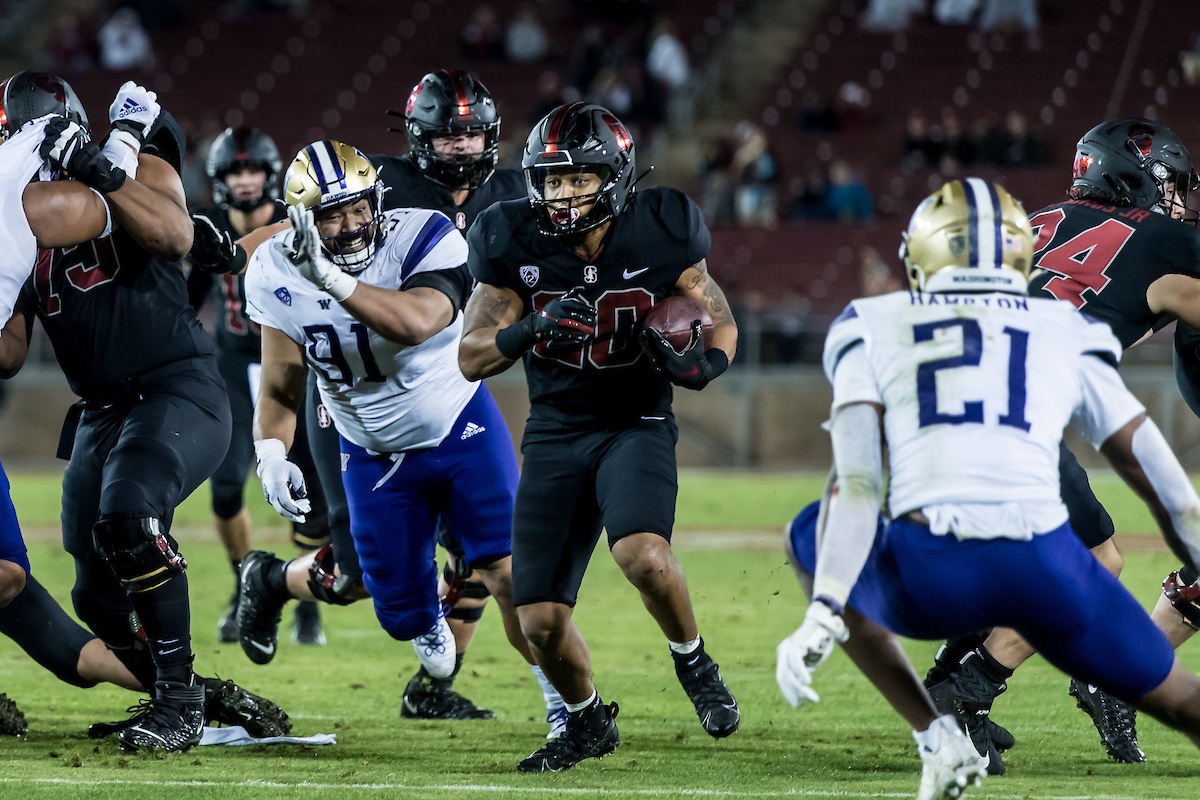In The Daily’s first edition of Stanford Film Study, we’re going to be taking a look at one of Stanford’s staple offensive plays: power.
Power is a basic run play Stanford has used since Jim Harbaugh’s stint on The Farm over a decade ago. Head coach David Shaw continues to use power, and it’s arguably Stanford’s most used run play.
How does power work?
Power tries to open a gap to the outside of the offensive line by utilizing leverage blocks and a pulling offensive guard. While the Cardinal can run this play out of a variety of personnel groups, they have a tendency to call it with extra linemen and in-line tight ends on the field. This creates extra run gaps that the defense has to fill. It also creates uncertainty within the defense about which gap the offense is trying to open.
At the snap of the ball, the entire offensive line, except for two, applies “down blocks,” or blocks that try to prevent defenders from coming to the side of the run. Because the offensive line and tight ends are applying down blocks, the defenders on the play side, who are outside of the tight end and tackle, will be left unblocked if not dealt with. Additionally, defenders who come through the outermost gap of the line will be uncovered. To deal with this, Stanford utilizes a fullback to seal outside defenders and they pull the right guard to cover the previously uncovered gap.
However, when the pulling guard leaves his alignment, another gap opens up which defenders can attack. To solve this problem, the weak side tackle will utilize a gap-hinge block. A gap-hinge block is when an offensive lineman steps to the interior to prevent inside penetration. If no defender engages with lineman, then the lineman will shove the outside defensive end upfield, away from the playside.
Below is a diagram of the play against Virginia Tech’s 4-3 defense in the 2011 Orange Bowl. During this particular play, Virginia Tech has a linebacker standing up on the outside of the tackle. There are two defensive backs on each side and also a weak side defensive back close to the line of scrimmage, but he’s not on the play side so he shouldn’t impact the play too much.

Once the ball is snapped, quarterback Andrew Luck ‘12 promptly turns to the right, which makes the defensive line believe the play is going in that direction. The defensive line scrapes right in response, allowing Stanford’s offensive line to gain leverage to apply their down blocks. The fullback seals the linebacker that tries to come around the edge, outside the tight end. The right guard pulls and blocks the defensive back coming through the outermost gap. The safety tries to prevent the running back from bouncing out to the perimeter, but this doesn’t prevent the running back from hitting the open gap between the tight end and guard.
Once this all occurs, the running back has a wide open hole and it’s off to the races. In this case, running back Jeremy Stewart ‘11 was able to take it to the house and gave Stanford a quick start to a game, which Stanford ultimately won 40-12.
While this particular play occurred over a decade ago, Stanford still has the concept in their modern playbook. Here’s an example of Stanford running power during the Big Game in 2020.
With athletic, experienced guards like senior Branson Bragg at their disposal, the Cardinal could run power a lot this season. However, with the receiving weapons that Stanford has as well, power is more likely to be run out of wider sets this season.
In 2021, the Cardinal ranked dead last in the conference in rushing yards per game. If the team wants to run the ball like they did back in the 2010s, then executing power at a more consistent level will be a great start.
